Discover 11 hidden attractions, cool sights, and unusual things to do in Kumamoto (Japan). Don't miss out on these must-see attractions: Kumamoto Castle, Suizen-ji Jōju-en, and Reigandō. Also, be sure to include Kumamoto Prefectural Museum of Art in your itinerary.
Below, you can find the list of the most amazing places you should visit in Kumamoto (Kumamoto).
Table of Contents
Kumamoto Castle

Also known as: 熊本城
Reconstructed castle with a museum. Kumamoto Castle is a hilltop Japanese castle located in Chūō-ku, Kumamoto, in Kumamoto Prefecture. It was a large and well fortified castle. The castle keep is a concrete reconstruction built in 1960, but several ancillary wooden buildings remain of the original castle. Kumamoto Castle is considered one of the three premier castles in Japan, along with Himeji Castle and Matsumoto Castle. Thirteen structures in the castle complex are designated Important Cultural Property.[1]
Address: 1-1 Hommaru, Chuo-ku, 860-0002 Kumamoto
Suizen-ji Jōju-en
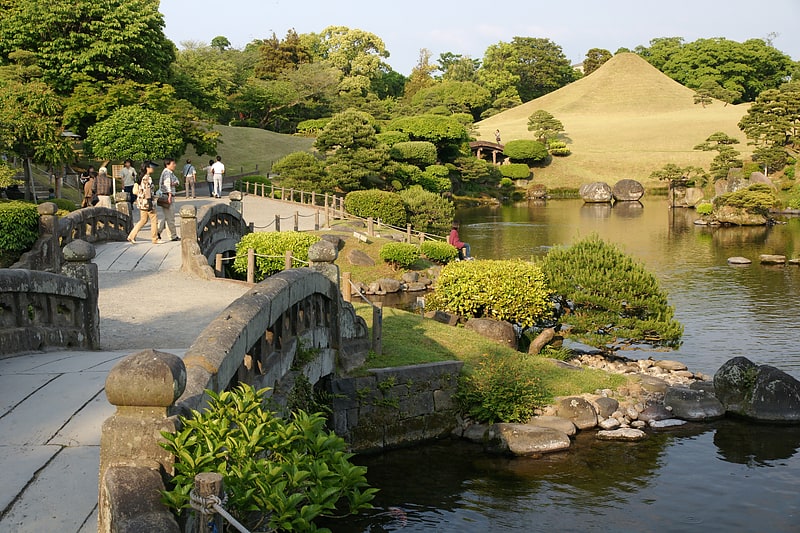
Also known as: 水前寺成趣園
Serene garden built in the 17th century. Suizen-ji Jōju-en is a tsukiyama Japanese garden located within Suizen-ji Park in Kumamoto Prefecture, Japan. The main tsukiyama is a representation of Mount Fuji. Lord Hosokawa Tadatoshi began construction of the garden in 1636 as a tea retreat. The park was named after a no-longer-extant Buddhist temple called Suizen-ji, and now hosts the Izumi Shrine, where members of the Hosokawa family are enshrined, and a Nōgaku-dō, a Noh theater. Lord Hosokawa selected this site because of its spring-fed pond, the clean water of which was excellent for tea. The thatched Kokin-Denju-no-Ma teahouse was originally in Kyoto's Imperial Palace, but was moved here in 1912.
The garden has been declared by the national government a historic site of scenic beauty.[2]
Address: 8-1 Suizenjikoen, 860-0956 Kumamoto
Reigandō
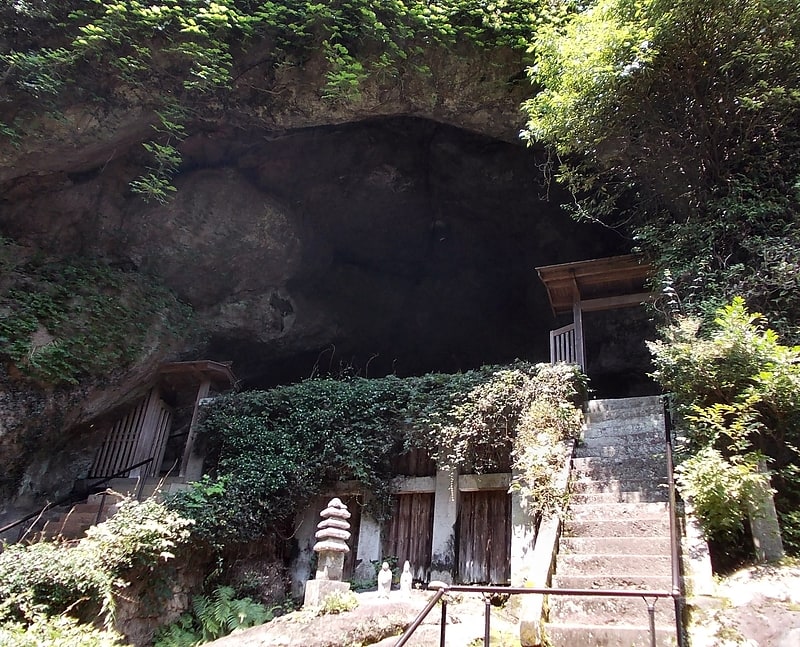
Also known as: 霊巌洞
Buddhist temple in a mountain cave. Reigandō is a cave that lies to the west of Kumamoto, Japan, that became a temporary home to the legendary rōnin, Miyamoto Musashi. From 1643, Musashi spent many of his last months in the cave, meditating and writing his Book of Five Rings. The cave is accessed easily by bus from Kumamoto City and nearby Tamana.[3]
Address: 589 Matsuocho Hirayama, 861-5282 Kumamoto
Kumamoto Prefectural Museum of Art
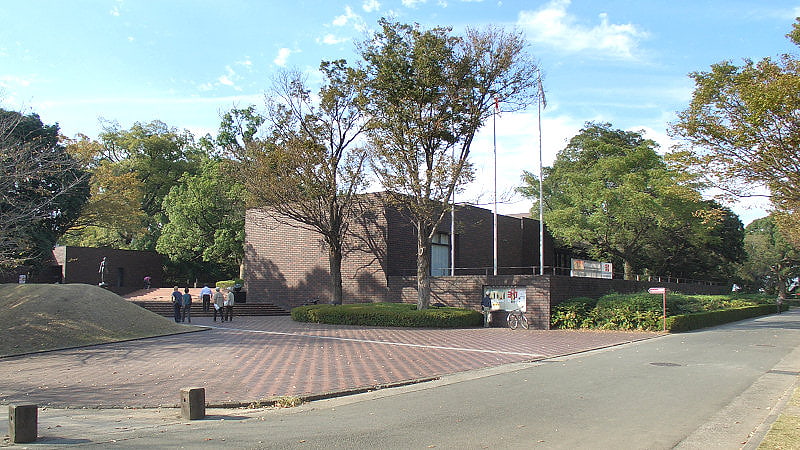
Also known as: 熊本県立美術館
Museum in Kumamoto, Japan. Kumamoto Prefectural Museum of Art opened in the precincts of Kumamoto Castle, Kumamoto, Japan in 1976. It is one of Japan's many museums which are supported by a prefecture.
The permanent collection focuses on the art and crafts of Kumamoto Prefecture and also contains works by Renoir and Rodin. One room is dedicated to replicas of decorated kofun found in the prefecture.[4]
Address: 2 Ninomaru, 860-0008 Kumamoto
Kengun Shrine

Also known as: 健軍神社
Shrine in Kumamoto, Japan. Kengun Shrine is the oldest traditional shrine in Kumamoto City, Kumamoto Prefecture, Japan. It is one of the 4 shrines of Aso Shrine group.[5]
Address: 13-1 Kengunhonmachi, 862-0910 Kumamoto
Fujisaki Hachimangū
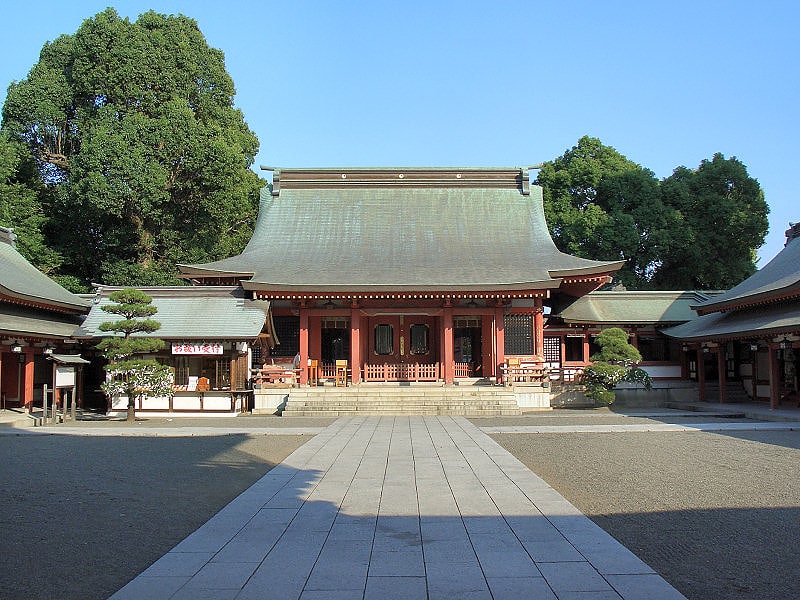
Also known as: 藤崎八旛宮
Shinto shrine in Kumamoto, Japan. Fujisaki Hachiman-gū is a Shinto shrine located in Chūō-ku, Kumamoto, Kumamoto, Japan. It is dedicated to Emperor Ōjin, Empress Jingū and Sumiyoshi Sanjin.[6]
Address: 3-1 Igawabuchimachi, Chuo-ku, 860-0841 Kumamoto
Honmyō-ji
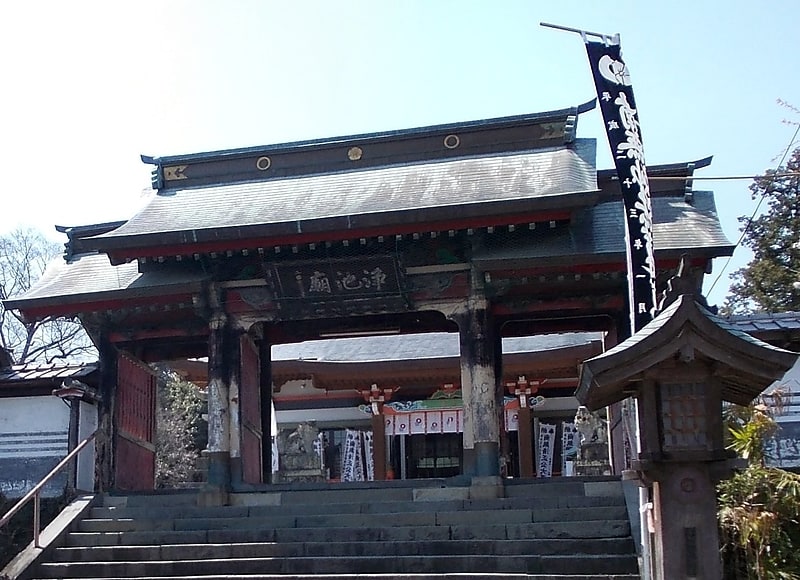
Also known as: 本妙寺
Temple in Kumamoto, Japan. Honmyō-ji is a Buddhist temple of the Nichiren sect, Rokujōmon-ryū, in Nishi-ku, Kumamoto, Japan. It is the most high-ranking temple of the sect in Kyushu. In Honmyō-ji is the grave of Katō Kiyomasa, a Japanese daimyō, builder of Kumamoto Castle and a dedicated buddhist of Nichiren Buddhism.[7]
Address: 4-13-1 Hanazono, 860-0072 Kumamoto
Hosokawa Gyōbutei

The former Hosokawa Gyobu Residence is a samurai residence located in the San-no-Maru site of Kumamoto Castle in Chuo-ku, Kumamoto City, Kumamoto Prefecture. The Hosokawa Gyobu family was one of the vassals of the Hosokawa clan along with the Hosokawa Naizen family.
Address: 3-1 Furukyomachi, 860-0007 Kumamoto
Katō Shrine
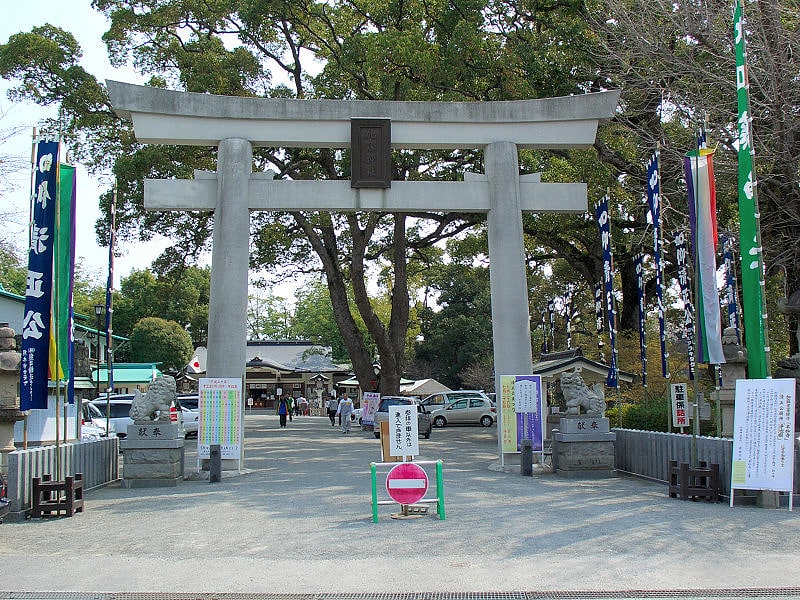
Also known as: 加藤神社
Shinto shrine in Kumamoto, Japan. Katō Shrine is a shrine in Kumamoto Castle, Chūō-ku, Kumamoto, Kumamoto, Japan, in which daimyō or powerful territorial lord Katō Kiyomasa is enshrined. Alongside Ōki Kaneyoshi and Kin Kan, who made junshi, are enshrined.[8]
Takahashi Inari Shrine
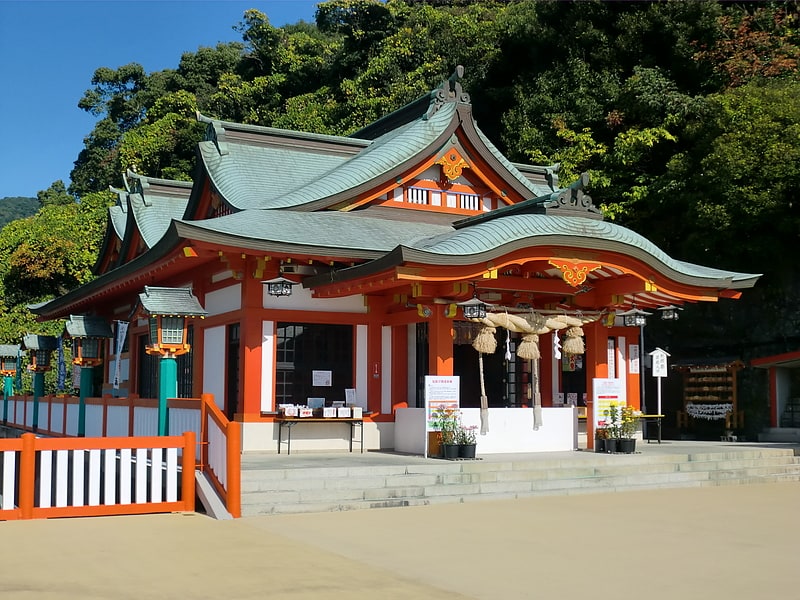
Also known as: 高橋稲荷神社
Shinto shrine in Kumamoto, Japan. Takahashi Inari Shrine is a Shinto Inari shrine, dedicated to the worship of the kami Inari. It is located in Kumamoto, Kumamoto Prefecture. Its main festival is held annually on November 8. It was founded in 1496.[9]
Address: 1121 Jozankamidaimachi, 860-0063 Kumamoto
Kashima
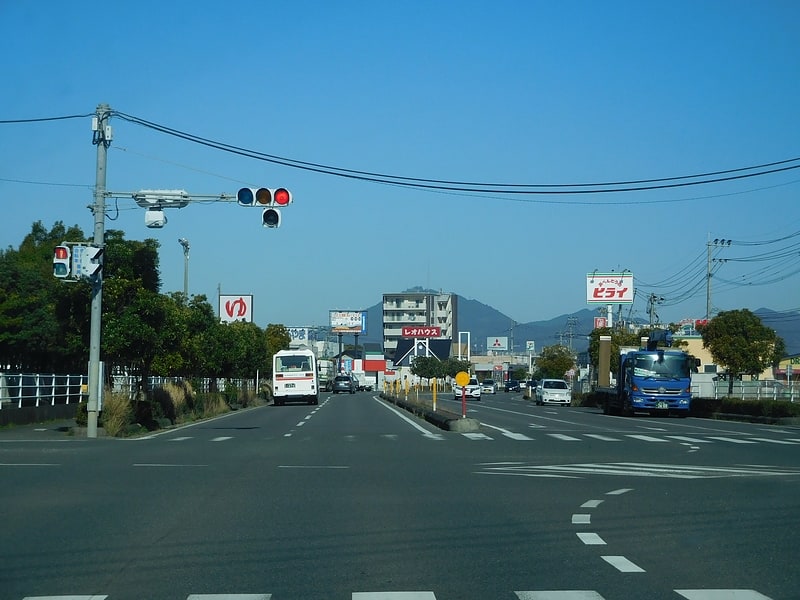
Also known as: 嘉島町
Town in Kyushu, Japan. Kashima is a town located in Kamimashiki District, Kumamoto Prefecture, Japan.
As of November 2016, the town has an estimated population of 9,119 and a density of 550 persons per km². The total area is 16.66 km².
Kashima Town is well known for being home to AEON Mall Kumamoto.[10]